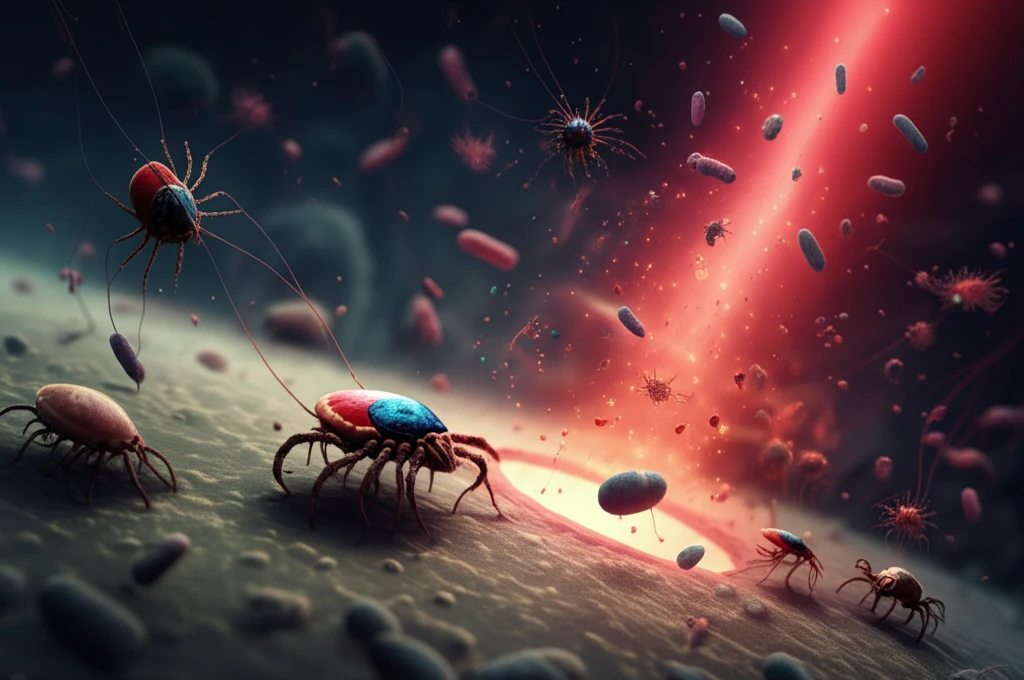
Shedding Light on Tick-Borne Diseases: How Photodynamic Therapy Could Be a Game Changer
"Could light therapy be the new frontier in treating rickettsial infections? Discover how photodynamic therapy offers hope in the fight against tick-borne illnesses and antibiotic resistance."
Tick-borne diseases are a growing concern worldwide, affecting outdoor enthusiasts, pet owners, and even those just spending time in their backyards. Rickettsiae, the bacteria responsible for many of these infections, are transmitted through tick bites and can lead to a range of illnesses, from mild discomfort to severe health complications. As these diseases become more prevalent and antibiotic resistance rises, innovative treatment options are urgently needed.
Traditional treatments for rickettsial infections primarily rely on antibiotics. However, the overuse of antibiotics has led to increasing resistance, making these drugs less effective over time. This has spurred researchers to explore alternative therapies that can combat these infections without contributing to the growing problem of antibiotic resistance.
One such promising approach is photodynamic therapy (PDT). PDT involves using a non-toxic photosensitizer along with harmless visible light to generate reactive oxygen species that kill bacteria. This method has shown promise in treating various infections and is now being investigated for its potential in combating tick-borne diseases.
The Science Behind Photodynamic Therapy

Photodynamic therapy (PDT) is emerging as a powerful tool in the fight against various infections, including those caused by tick-borne bacteria. The process is elegantly simple yet remarkably effective. First, a photosensitizer, a non-toxic substance, is applied to the infected area. This photosensitizer is designed to be absorbed by the targeted cells, in this case, the rickettsiae-infected cells.
- Targeted Action: Selectively destroys infected cells.
- Reduced Antibiotic Reliance: Minimizes the risk of antibiotic resistance.
- Low Toxicity: Uses non-toxic photosensitizers and visible light.
- Broad-Spectrum Potential: May be effective against various types of bacteria.
Future Directions and Implications
The findings of this study open up exciting possibilities for the treatment of tick-borne diseases. While further research is needed, PDT shows promise as a safe, effective, and low-cost alternative to traditional antibiotic treatments. By reducing our reliance on antibiotics, we can help combat the growing problem of antibiotic resistance and protect the effectiveness of these crucial drugs for future generations.
